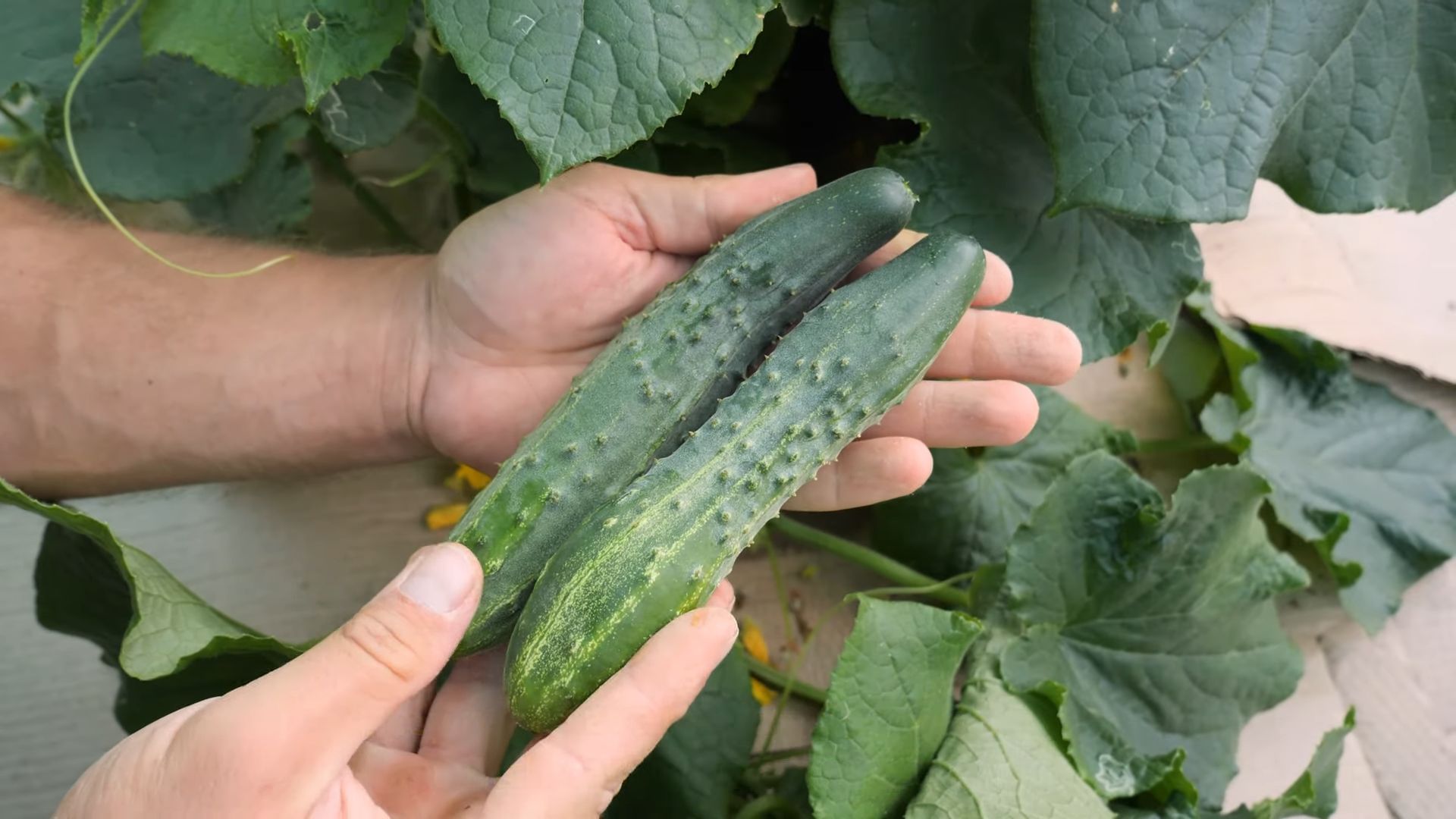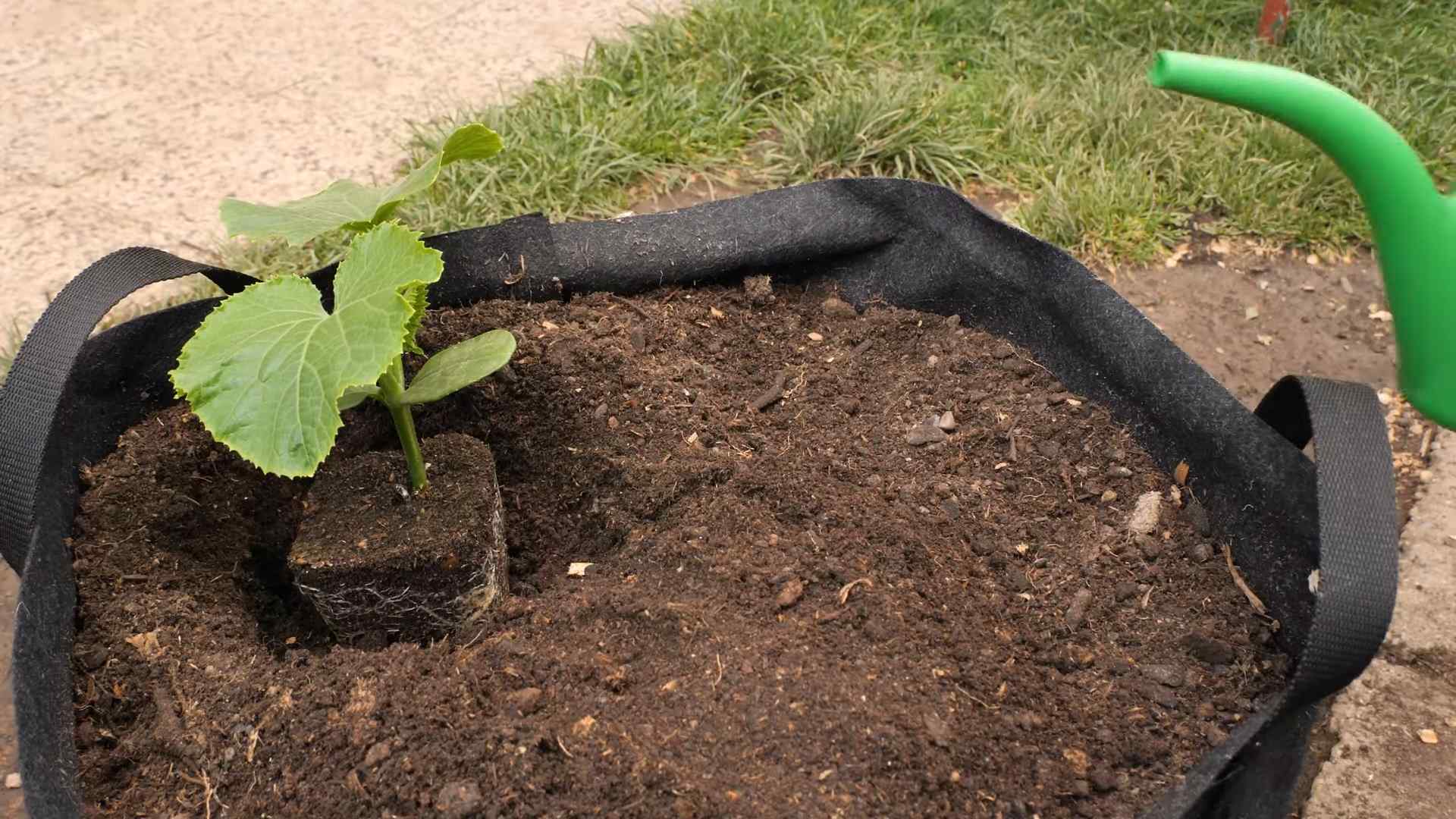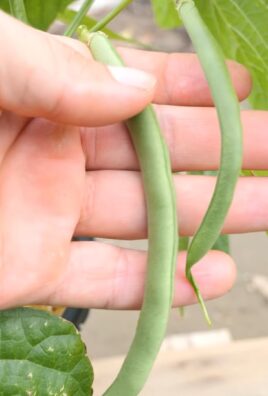Cucumber Growing Tips are what every gardener, from novice to seasoned pro, craves when those first seedlings emerge! Let’s be honest, there’s nothing quite as satisfying as biting into a crisp, homegrown cucumber, especially one you’ve nurtured from a tiny seed. But getting those perfect, juicy cucumbers isn’t always a walk in the park, is it?
For centuries, cucumbers have been a staple in diets around the world, with evidence suggesting their cultivation dates back over 3,000 years! From ancient civilizations using them for medicinal purposes to modern-day chefs incorporating them into gourmet dishes, the cucumber’s versatility is undeniable. But the real magic happens when you grow your own.
That’s where these DIY tricks and hacks come in. I’m going to share some of my favorite, tried-and-true methods to help you maximize your cucumber yield and minimize common problems like bitterness, pests, and diseases. Forget those bland, store-bought cucumbers! With a little know-how and some simple techniques, you can enjoy a bountiful harvest of delicious, homegrown cucumbers all season long. So, let’s dive into these Cucumber Growing Tips and get ready to transform your garden into a cucumber paradise!

Growing Cucumbers Like a Pro: My DIY Guide to a Bountiful Harvest
Okay, cucumber lovers, let’s dive into the wonderful world of growing these crisp, refreshing veggies right in your own backyard! I’ve learned a thing or two over the years, and I’m excited to share my secrets to a cucumber harvest that will have you swimming in pickles and salads. This guide is all about maximizing your yield and minimizing the headaches.
Choosing the Right Cucumber Variety
Before we even get our hands dirty, it’s crucial to pick the right cucumber variety for your needs and climate. There are three main types: slicing, pickling, and burpless.
* **Slicing Cucumbers:** These are your classic salad cucumbers, typically long and smooth-skinned. They’re great for fresh eating. Some popular varieties include ‘Marketmore 76’, ‘Straight Eight’, and ‘Dasher II’.
* **Pickling Cucumbers:** Shorter and stubbier than slicing cucumbers, pickling varieties are perfect for, well, pickling! They have a thicker skin that holds up well in brine. ‘National Pickling’ and ‘Boston Pickling’ are reliable choices.
* **Burpless Cucumbers:** These are bred to have lower levels of cucurbitacin, the compound that can sometimes cause bitterness and digestive upset. They tend to be longer and thinner than other types. ‘Sweet Success’ and ‘Armenian’ cucumbers are popular burpless options.
Consider your climate too! Some varieties are more heat-tolerant or disease-resistant than others. Check your local nursery or online resources for recommendations specific to your region.
Preparing the Soil: The Foundation for Success
Cucumbers are heavy feeders, meaning they need nutrient-rich soil to thrive. Proper soil preparation is absolutely essential.
* **Sunlight:** Cucumbers need at least 6-8 hours of direct sunlight per day. Choose a location in your garden that gets plenty of sun.
* **Soil Type:** They prefer well-drained, loamy soil with a pH between 6.0 and 7.0.
* **Amendments:** Before planting, amend the soil with plenty of organic matter, such as compost, well-rotted manure, or leaf mold. This will improve drainage, fertility, and water retention.
* **Raised Beds:** If your soil is heavy clay or poorly drained, consider growing cucumbers in raised beds. This will provide better drainage and warmer soil temperatures.
Planting Cucumber Seeds or Seedlings
You can start cucumber seeds indoors 3-4 weeks before the last expected frost, or direct sow them in the garden once the soil has warmed up to at least 60掳F (15掳C). I usually prefer direct sowing because cucumbers don’t always transplant well.
* **Starting Seeds Indoors (Optional):**
1. Fill seed trays or small pots with seed-starting mix.
2. Sow 2-3 seeds per cell, about 陆 inch deep.
3. Keep the soil moist but not soggy.
4. Provide plenty of light, either from a sunny window or a grow light.
5. Harden off the seedlings by gradually exposing them to outdoor conditions for a week before transplanting.
* **Direct Sowing:**
1. Prepare the soil as described above.
2. Sow seeds about 1 inch deep and 12-18 inches apart.
3. Water gently but thoroughly.
4. Thin seedlings to one plant per space once they have a few true leaves.
Providing Support: Trellising for a Healthier Harvest
Cucumbers are vining plants, and they benefit greatly from being trellised. Trellising provides better air circulation, reduces disease problems, and makes harvesting easier.
* **Types of Trellises:** There are many different types of trellises you can use, including:
* **A-frame trellises:** These are easy to build and provide plenty of support.
* **Vertical trellises:** These are great for small spaces.
* **Cattle panels:** These are sturdy and can support a lot of weight.
* **Setting up the Trellis:**
1. Install the trellis before or shortly after planting the cucumbers.
2. Make sure the trellis is sturdy enough to support the weight of the mature plants.
3. As the cucumber vines grow, gently guide them onto the trellis and tie them loosely with twine or plant clips.
Watering and Fertilizing: Keeping Your Cucumbers Happy
Cucumbers need consistent moisture, especially during hot weather. Water deeply and regularly, aiming for about 1 inch of water per week.
* **Watering:**
* Water early in the morning to allow the foliage to dry before nightfall, which helps prevent fungal diseases.
* Use a soaker hose or drip irrigation to deliver water directly to the roots.
* Avoid overhead watering, which can splash soil onto the leaves and spread disease.
* **Fertilizing:**
* Feed cucumbers with a balanced fertilizer every 2-3 weeks.
* Look for a fertilizer with a higher potassium content, as this promotes fruit development.
* You can also use organic fertilizers, such as compost tea or fish emulsion.
Pest and Disease Control: Protecting Your Crop
Cucumbers are susceptible to a few common pests and diseases. Here’s how to keep them at bay:
* **Common Pests:**
* **Cucumber Beetles:** These beetles can damage foliage and spread bacterial wilt. Use row covers to protect young plants, and handpick beetles as needed.
* **Aphids:** These tiny insects suck sap from the leaves, causing them to curl and distort. Spray aphids with a strong stream of water or use insecticidal soap.
* **Squash Bugs:** These pests can be difficult to control. Handpick them and their eggs, and use row covers to protect young plants.
* **Common Diseases:**
* **Powdery Mildew:** This fungal disease causes a white, powdery coating on the leaves. Improve air circulation by trellising plants, and use a fungicide if necessary.
* **Downy Mildew:** This fungal disease causes yellow spots on the upper surface of the leaves and a grayish-purple mold on the underside. Use a fungicide and improve air circulation.
* **Bacterial Wilt:** This disease causes the plants to wilt and die. It’s spread by cucumber beetles. Control cucumber beetles to prevent bacterial wilt.
Harvesting Cucumbers: The Sweet Reward
The moment you’ve been waiting for! Cucumbers are typically ready to harvest 50-70 days after planting, depending on the variety.
* **Harvesting Tips:**
* Harvest cucumbers when they are the desired size and color.
* Use a sharp knife or pruning shears to cut the cucumbers from the vine.
* Harvest regularly to encourage continued production.
* Overripe cucumbers can become bitter and seedy.
Extending the Harvest: Succession Planting
To enjoy a continuous supply of cucumbers throughout the season, consider succession planting. This involves planting new seeds or seedlings every 2-3 weeks.
* **Succession Planting Steps:**
1. Start new seeds or seedlings while your first planting is still producing.
2. Transplant the new plants into the garden as soon as the first planting starts to decline.
3. This will ensure a steady supply of fresh cucumbers all season long.
Troubleshooting Common Cucumber Problems
Even with the best care, you might encounter some problems along the way. Here are a few common issues and how to address them:
* **Yellowing Leaves:** This can be caused by overwatering, underwatering, nutrient deficiencies, or disease. Check the soil moisture and adjust your watering accordingly. Fertilize with a balanced fertilizer. Inspect the plants for signs of disease.
* **Bitter Cucumbers:** Bitterness can be caused by stress, such as heat, drought, or nutrient deficiencies. Provide consistent moisture and fertilize regularly. Choose burpless varieties, which are less prone to bitterness.
* **Misshapen Cucumbers:** This can be caused by poor pollination or nutrient deficiencies. Ensure that there are plenty of pollinators in your garden, and fertilize with a balanced fertilizer.
* **Lack of Fruit Production:** This can be caused by poor pollination, lack of sunlight, or nutrient deficiencies. Hand-pollinate the flowers if necessary. Make sure the plants are getting at least 6-8 hours of direct sunlight per day. Fertilize with a balanced fertilizer.
Saving Cucumber Seeds (Optional)
If you want to save seeds from your cucumber plants for future use, here’s how:
* **Seed Saving Steps:**
1. Allow a few cucumbers to mature fully on the vine. They will turn yellow or orange and become very large.
2. Harvest the cucumbers and scoop out the seeds.
3. Rinse the seeds thoroughly to remove any pulp.
4. Spread the seeds out on a paper towel to dry completely.
5. Store the dried

Conclusion
So, there you have it! Mastering these simple yet effective DIY cucumber growing tips can truly transform your gardening experience and reward you with a bountiful harvest of crisp, delicious cucumbers. We’ve covered everything from optimizing soil conditions and providing adequate support to warding off pests and diseases with natural solutions.
Why is this a must-try? Because growing your own cucumbers isn’t just about saving money at the grocery store; it’s about connecting with nature, understanding the food you eat, and enjoying the unparalleled flavor of freshly picked produce. Store-bought cucumbers simply can’t compare to the vibrant taste and satisfying crunch of a cucumber you’ve nurtured from seed to fruit. Plus, you have complete control over the growing process, ensuring your cucumbers are free from harmful chemicals and pesticides.
But the beauty of gardening lies in its adaptability. Feel free to experiment with different cucumber varieties to find your favorites. Try pickling cucumbers for homemade pickles, slicing cucumbers for refreshing salads, or even Armenian cucumbers for a unique, mild flavor. Consider companion planting with basil, marigolds, or nasturtiums to further deter pests and attract beneficial insects.
For those with limited space, consider growing cucumbers vertically in containers or raised beds. This not only maximizes your growing area but also improves air circulation and reduces the risk of fungal diseases. You can also explore different trellising methods, from simple A-frames to elaborate arches, to create a visually stunning and productive cucumber garden.
We’ve also touched on the importance of consistent watering and fertilization. Remember, cucumbers are thirsty plants, especially during hot weather. Aim for deep, infrequent watering to encourage strong root growth. And don’t forget to feed your cucumbers regularly with a balanced fertilizer to provide them with the nutrients they need to thrive.
Ultimately, the best way to learn is by doing. Don’t be afraid to get your hands dirty, make mistakes, and learn from your experiences. Gardening is a journey, not a destination. Embrace the challenges, celebrate the successes, and most importantly, have fun!
We are confident that these DIY cucumber growing tips will empower you to cultivate a thriving cucumber patch, regardless of your gardening experience. Now it’s your turn! We encourage you to put these tips into practice and share your results with us. Post photos of your cucumber harvests, share your favorite cucumber recipes, and let us know what worked best for you. Your insights and experiences will help other gardeners learn and grow. Let’s build a community of cucumber enthusiasts!
Frequently Asked Questions (FAQ)
Q: How often should I water my cucumber plants?
A: Cucumber plants need consistent moisture, especially during fruit development. Aim to water deeply and infrequently, about 1-2 inches of water per week, depending on the weather and soil conditions. Check the soil moisture by sticking your finger about an inch deep. If it feels dry, it’s time to water. Avoid overhead watering, as this can lead to fungal diseases. Drip irrigation or soaker hoses are excellent options for delivering water directly to the roots. Remember that container-grown cucumbers will likely need more frequent watering than those grown in the ground.
Q: What kind of fertilizer should I use for my cucumber plants?
A: Cucumbers are heavy feeders and benefit from regular fertilization. Start with a balanced fertilizer (e.g., 10-10-10) at planting time. Once the plants start producing flowers and fruits, switch to a fertilizer with a higher potassium content (e.g., 5-10-10) to promote fruit development. You can also supplement with organic fertilizers like compost tea or fish emulsion. Apply fertilizer according to the package instructions, and avoid over-fertilizing, as this can burn the roots.
Q: How do I prevent pests and diseases from attacking my cucumber plants?
A: Prevention is key when it comes to pests and diseases. Start by choosing disease-resistant cucumber varieties. Ensure good air circulation by spacing plants properly and pruning excess foliage. Regularly inspect your plants for signs of pests or diseases, such as aphids, squash bugs, or powdery mildew. If you spot any problems, take action immediately. Organic pest control methods include hand-picking pests, using insecticidal soap, or applying neem oil. For fungal diseases, try spraying with a copper fungicide or baking soda solution. Companion planting with herbs like basil or marigolds can also help deter pests.
Q: Why are my cucumber flowers falling off without producing fruit?
A: This is a common problem called blossom drop. Several factors can contribute to blossom drop, including temperature extremes (too hot or too cold), inconsistent watering, poor pollination, and nutrient deficiencies. Ensure your plants are getting adequate water and fertilizer. If temperatures are consistently above 90掳F (32掳C) or below 60掳F (15掳C), try providing shade or protection from the cold. Cucumbers need pollination to set fruit, so encourage pollinators by planting flowers that attract bees and other beneficial insects. You can also hand-pollinate the flowers by transferring pollen from the male flowers to the female flowers using a small brush.
Q: How do I know when my cucumbers are ready to harvest?
A: The size and color of mature cucumbers vary depending on the variety. Generally, cucumbers are ready to harvest when they are firm, have a deep green color (unless it’s a yellow or white variety), and are the appropriate size for the variety. Check the seed packet or plant tag for specific harvesting instructions. Overripe cucumbers can become bitter and seedy. Harvest cucumbers regularly to encourage continued production. Use a sharp knife or pruning shears to cut the cucumber from the vine, leaving a short stem attached.
Q: Can I grow cucumbers in containers?
A: Yes, cucumbers can be successfully grown in containers, especially bush or compact varieties. Choose a large container (at least 5 gallons) with good drainage. Use a high-quality potting mix and provide a trellis or support for the vines to climb. Container-grown cucumbers will need more frequent watering and fertilization than those grown in the ground. Place the container in a sunny location that receives at least 6-8 hours of sunlight per day.
Q: What are some good companion plants for cucumbers?
A: Cucumbers benefit from companion planting with several different plants. Some good choices include:
* **Basil:** Repels aphids and whiteflies.
* **Marigolds:** Deters nematodes and other soil pests.
* **Nasturtiums:** Attracts aphids away from cucumbers.
* **Beans:** Fixes nitrogen in the soil, benefiting cucumbers.
* **Corn:** Provides shade and support for cucumber vines.
* **Dill:** Attracts beneficial insects like ladybugs and lacewings.
Avoid planting cucumbers near aromatic herbs like sage, as they can inhibit growth.
Q: My cucumber leaves are turning yellow. What could be the problem?
A: Yellowing cucumber leaves can indicate several issues. Overwatering or poor drainage can cause root rot, leading to yellowing leaves. Nutrient deficiencies, particularly nitrogen or magnesium, can also cause yellowing. Pests like spider mites or squash bugs can suck the sap from the leaves, causing them to turn yellow. Fungal diseases like powdery mildew or downy mildew can also cause yellowing and spotting. Inspect your plants carefully to identify the cause and take appropriate action.
Q: How can I save seeds from my cucumber plants for next year?
A: Saving cucumber seeds is possible, but it’s important to note that hybrid varieties may not produce true-to-type offspring. To save seeds, allow a cucumber to fully ripen on the vine until it turns yellow or orange and becomes soft. Scoop out the seeds and pulp, and rinse them thoroughly in water. Spread the seeds out on a paper towel to dry completely. Store the dried seeds in an airtight container in a cool, dark place. Label the container with the cucumber variety and the date.




Leave a Comment